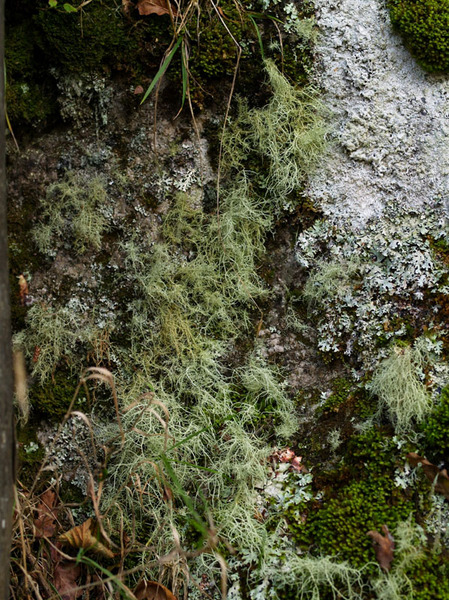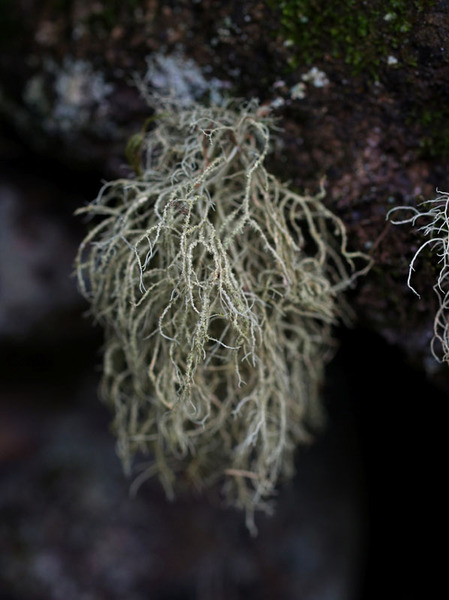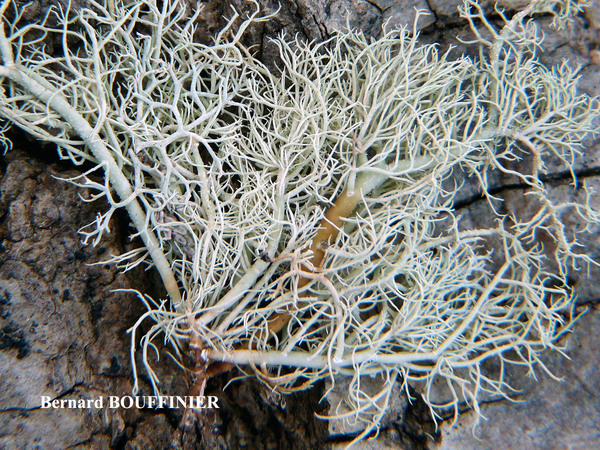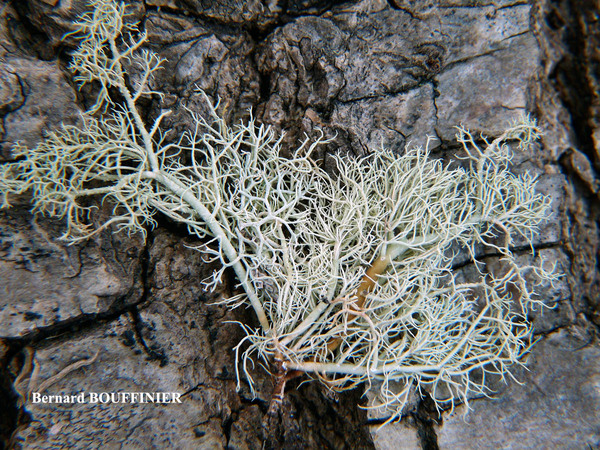Usnea flammea Stirt.
Scottish Natur., 6: 102, 1881.
Synonyms: Usnea dalmatica Motyka; Usnea rupestris Motyka
Distribution: N - Ven, Lig. C - Tosc (Loppi & Baragatti 2011), Sar (B-40161).
Description: Thallus fruticose-filamentous, greenish, shrubby to rarely subpendulous, (3-)4-7(-8) cm long, branching (at least near the base) isotomic-dichotomously with divergent branches. Main branches cylindrical or irregular, tapering in longitudinal section, 0.7-1 mm thick, smooth (without foveolae and transverse furrows), the base usually whitish, with conspicuous annular cracks exposing the medullary tissue. Lateral branches not or only slightly constricted at attachment point. Papillae absent to abundant, verrucose; fibrils more or less numerous, slender, spinulose, 2-3 mm long. Soralia at first punctiform, then efflorescent, irregular in outline and often enlarged and occupying up to half the diameter of the branch, originating from cortex or rarely from eroded papillae, with numerous, 0.15-0.3 mm long, clustered isidiomorphs which tend to break off easily. Cortex matt in longitudinal section, rather thin (6-10% of branch thickness); medulla white, dense to compact, moderately thin to moderately thick (17-29%); central axis white, rather thick (29-49%); ratio axis/medulla ranging between 1 and 2.4. Apothecia not observed in Italian material. Photobiont chlorococcoid. Spot tests: cortex K-, C-, KC-, P-; medulla K+ yellow to slowly reddish orange, C-, KC-, P+ yellow-orange. Chemistry: cortex with usnic acid; medulla with usnic, stictic, menegazziaic and constictic acids, more rarely with norstictic and/or lobaric acids.Note: a western European, oceanic species, mainly epiphytic, but also found on rocks and soil in damp situations, below the subalpine belt. All Italian records, except that from Sardinia which was identified by Ph. Clerc, need confirmation. The species was included in the Italian red list of epiphytic lichens as “Data Deficient” (Nascimbene & al. 2013c).
Growth form: Fruticose filamentous
Substrata: bark and rocks
Photobiont: green algae other than Trentepohlia
Reproductive strategy: mainly asexual, by soredia, or soredia-like structures (e.g. blastidia)
Restricted to humid-warm, oceanic areas
Commonnes-rarity: (info)
Alpine belt: absent
Subalpine belt: absent
Oromediterranean belt: absent
Montane belt: very rare
Submediterranean belt: absent
Padanian area: absent
Humid submediterranean belt: very rare
Humid mediterranean belt: absent
Dry mediterranean belt: absent
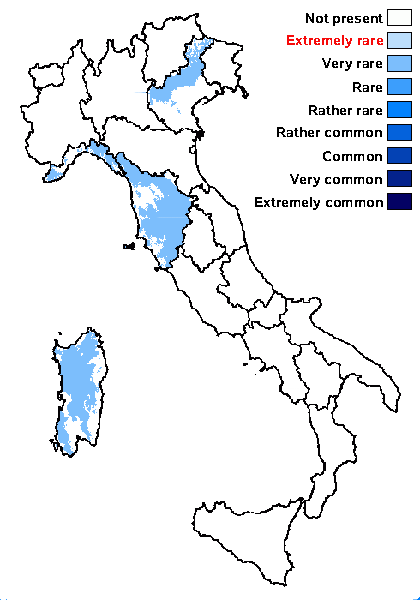
Predictive model

Tiiu Tõrra; Owner: Tiiu Tõrra - Institute of Ecology and Earth Sciences, University of Tartu, Estonia
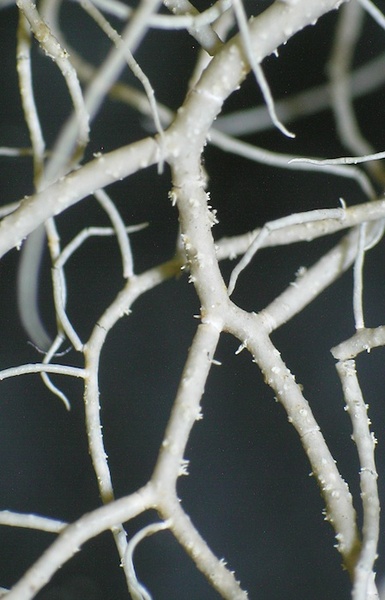
Tiiu Tõrra; Owner: Tiiu Tõrra - Institute of Ecology and Earth Sciences, University of Tartu, Estonia
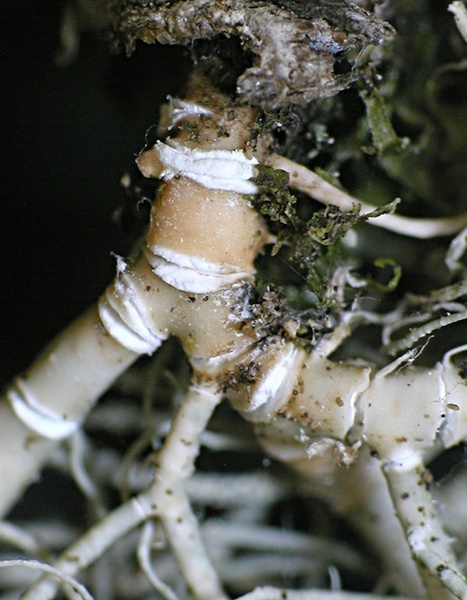
Tiiu Tõrra; Owner: Tiiu Tõrra - Institute of Ecology and Earth Sciences, University of Tartu, Estonia

Tiiu Tõrra; Owner: Tiiu Tõrra - Institute of Ecology and Earth Sciences, University of Tartu, Estonia
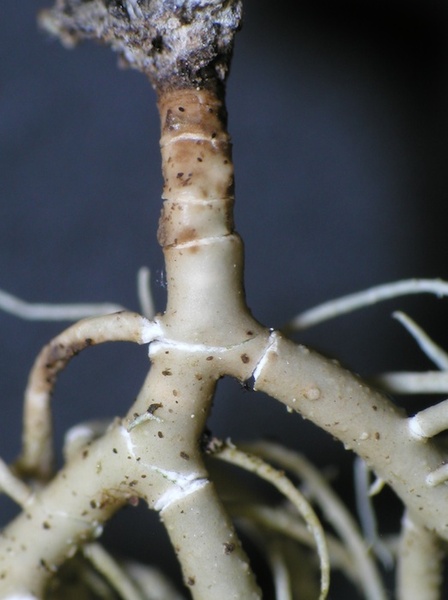
Tiiu Tõrra; Owner: Tiiu Tõrra - Institute of Ecology and Earth Sciences, University of Tartu, Estonia
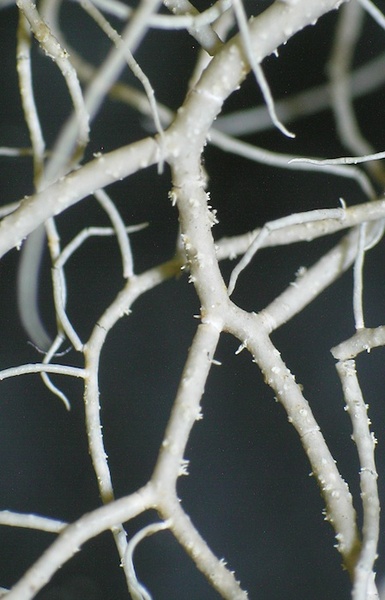
Tiiu Tõrra; Owner: Tiiu Tõrra - Institute of Ecology and Earth Sciences, University of Tartu, Estonia
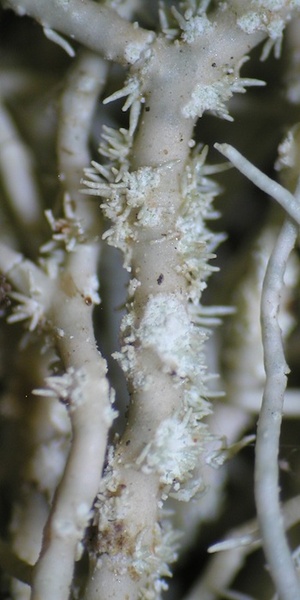
Tiiu Tõrra; Owner: Tiiu Tõrra - Institute of Ecology and Earth Sciences, University of Tartu, Estonia
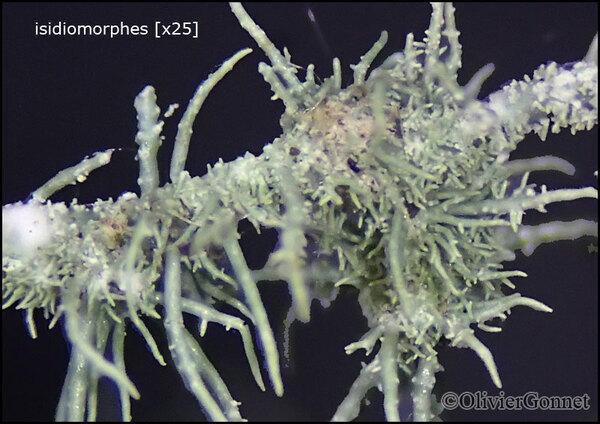
Courtesy Danièle et Olivier Gonnet - Source: https://www.afl-lichenologie.fr/Photos_AFL/Photos_AFL_U/Usnea_flammea.htm
France, mars 2015 - Fours Nièvre
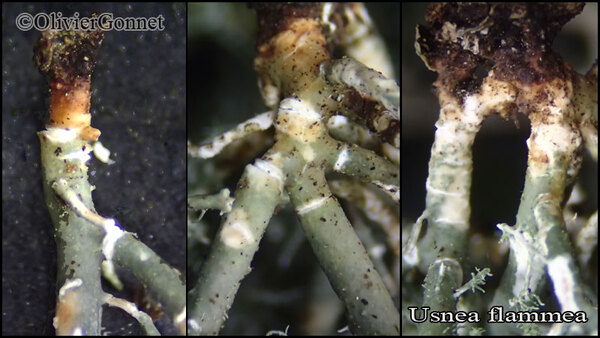
Courtesy Danièle et Olivier Gonnet - Source: https://www.afl-lichenologie.fr/Photos_AFL/Photos_AFL_U/Usnea_flammea.htm
France, mars 2015 - Fours Nièvre
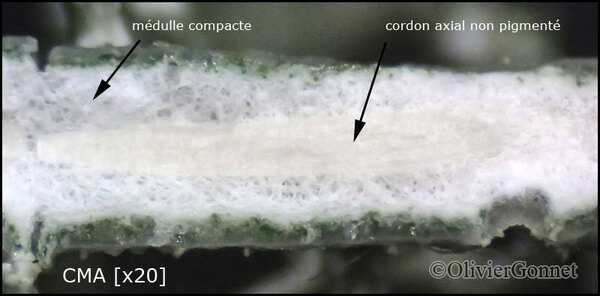
Courtesy Danièle et Olivier Gonnet - Source: https://www.afl-lichenologie.fr/Photos_AFL/Photos_AFL_U/Usnea_flammea.htm
France, mars 2015 - Fours Nièvre
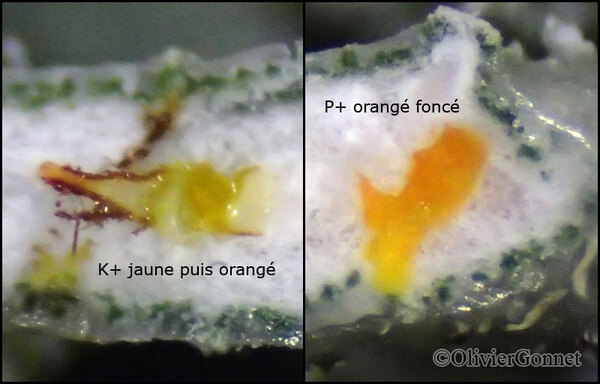
Courtesy Danièle et Olivier Gonnet - Source: https://www.afl-lichenologie.fr/Photos_AFL/Photos_AFL_U/Usnea_flammea.htm
France, mars 2015 - Fours Nièvre
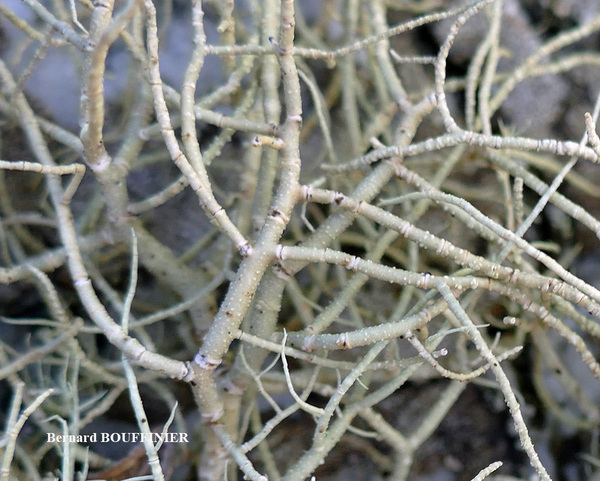
Bernard Bouffinier - Source: http://www.lichensmaritimes.org/index.php?task=fiche&lichen=249&lang=en
France, Cap de la Chèvre
saxicolous
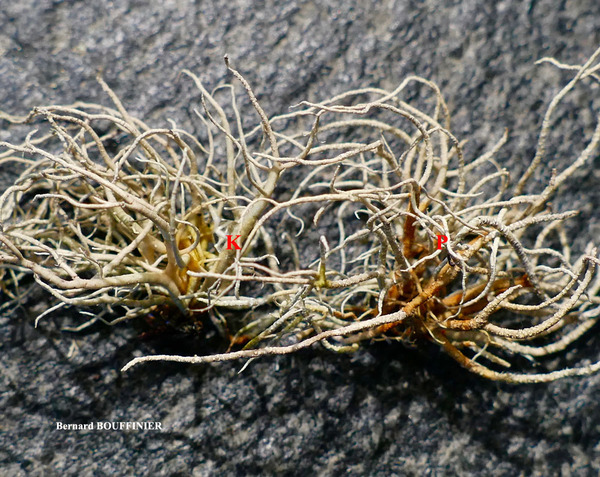
Bernard Bouffinier - Source: http://www.lichensmaritimes.org/index.php?task=fiche&lichen=249&lang=en
France, Cap de la Chèvre
saxicolous
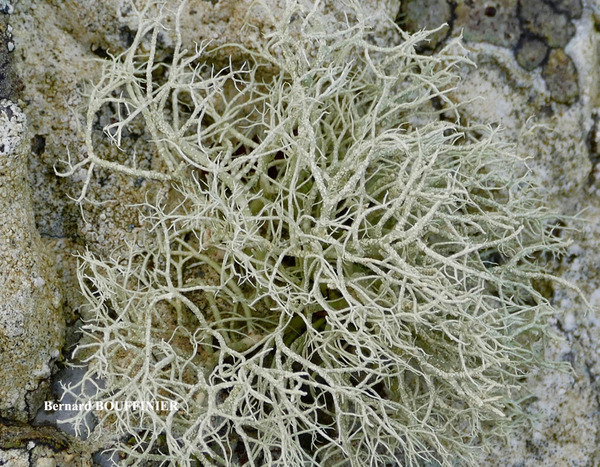
Bernard Bouffinier - Source: http://www.lichensmaritimes.org/index.php?task=fiche&lichen=249&lang=en
France, Cap de la Chèvre
saxicolous
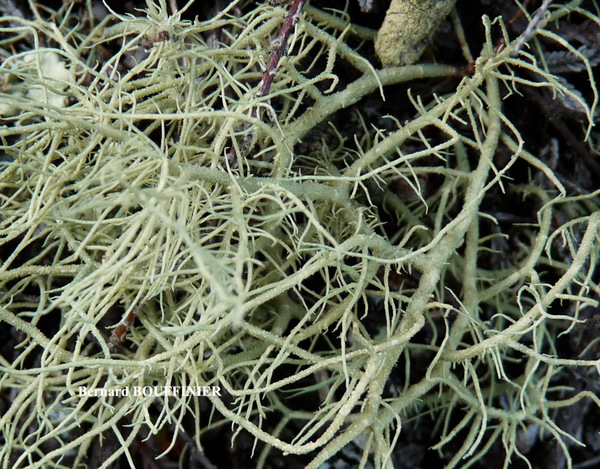
Bernard Bouffinier - Source: http://www.lichensmaritimes.org/index.php?task=fiche&lichen=249&lang=en
France, Pointe de Dinan
saxicolous
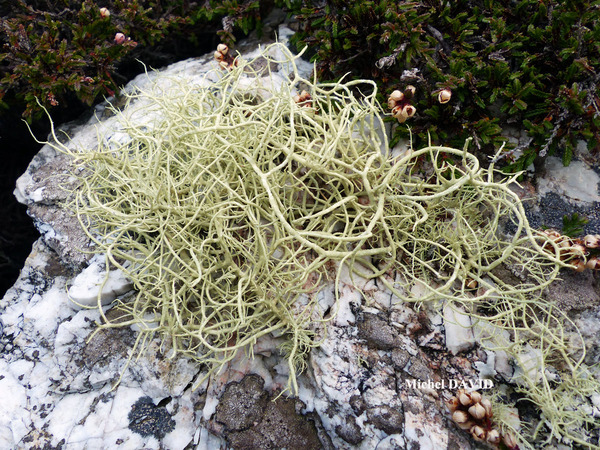
Bernard Bouffinier - Source: http://www.lichensmaritimes.org/index.php?task=fiche&lichen=249&lang=en
France, Camaret
saxicolous

Bernard Bouffinier - Source: http://www.lichensmaritimes.org/index.php?task=fiche&lichen=249&lang=en
France, Pointe de Dinan
saxicolous
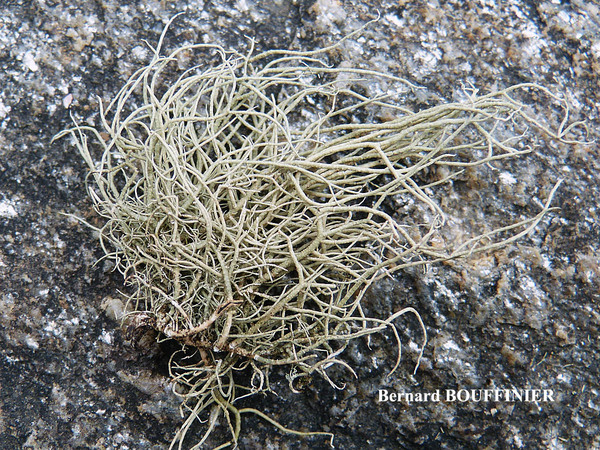
Bernard Bouffinier - Source: http://www.lichensmaritimes.org/index.php?task=fiche&lichen=249&lang=en
France, Roc'h Trédudon
saxicolous

Michel David - Source: http://www.lichensmaritimes.org/index.php?task=fiche&lichen=249&lang=en
France, Camaret
saxicolous
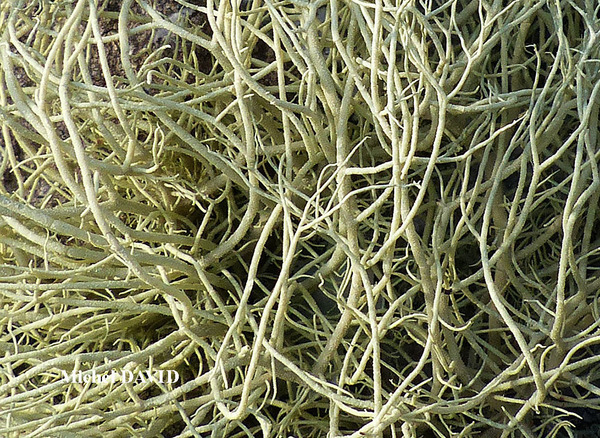
Michel David - Source: http://www.lichensmaritimes.org/index.php?task=fiche&lichen=249&lang=en
France, Camaret
saxicolous
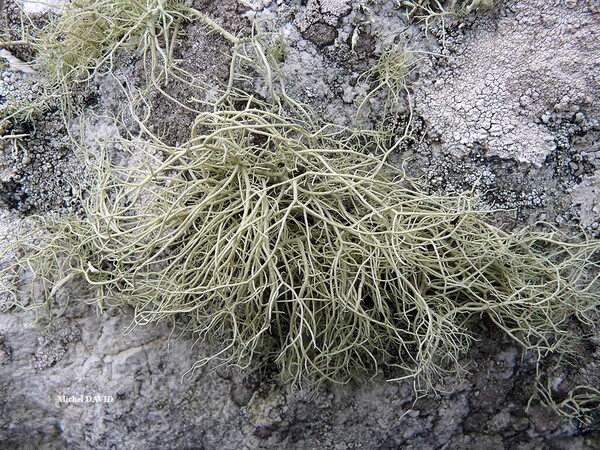
Michel David - Source: http://www.lichensmaritimes.org/index.php?task=fiche&lichen=249&lang=en
France, Le Toulinguet
saxicolous
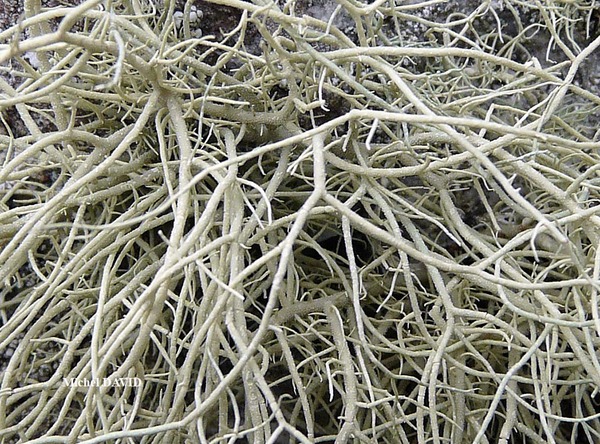
Michel David - Source: http://www.lichensmaritimes.org/index.php?task=fiche&lichen=249&lang=en
France, Le Toulinguet
saxicolous
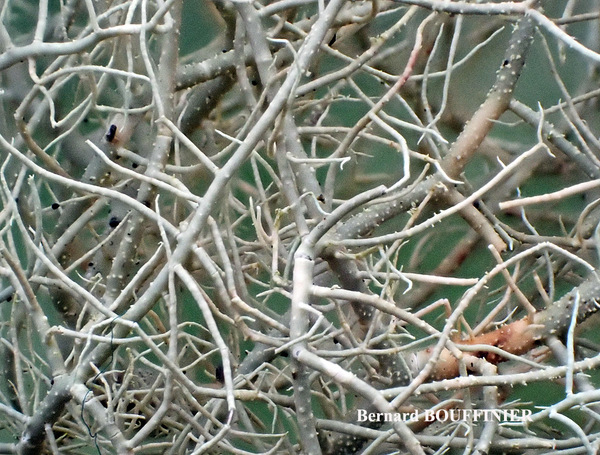
Bernard Bouffinier - Source: http://www.lichensmaritimes.org/index.php?task=fiche&lichen=1301&lang=en
France, Bois du Kador
corticolous
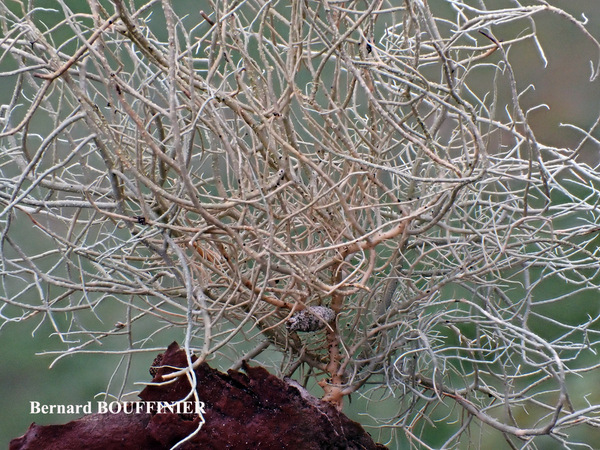
Bernard Bouffinier - Source: http://www.lichensmaritimes.org/index.php?task=fiche&lichen=1301&lang=en
France, Bois du Kador
corticolous
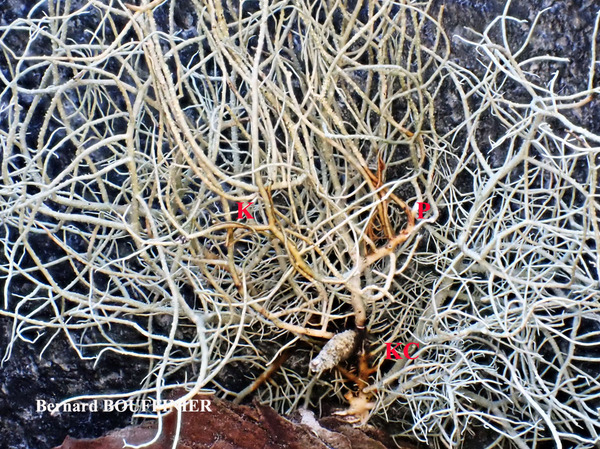
Bernard Bouffinier - Source: http://www.lichensmaritimes.org/index.php?task=fiche&lichen=1301&lang=en
France, Bois du Kador
corticolous
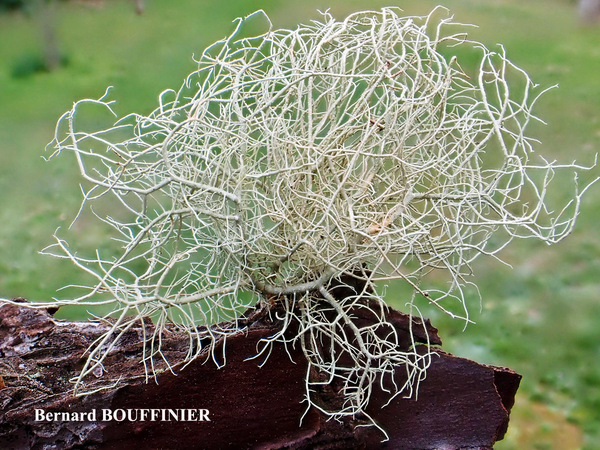
Bernard Bouffinier - Source: http://www.lichensmaritimes.org/index.php?task=fiche&lichen=1301&lang=en
France, Bois du Kador
corticolous
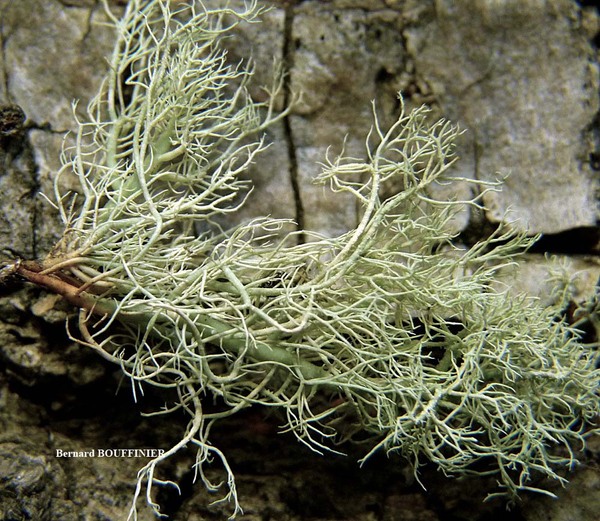
Bernard Bouffinier - Source: http://www.lichensmaritimes.org/index.php?task=fiche&lichen=1301&lang=en
France, Cap de la Chèvre
corticolous
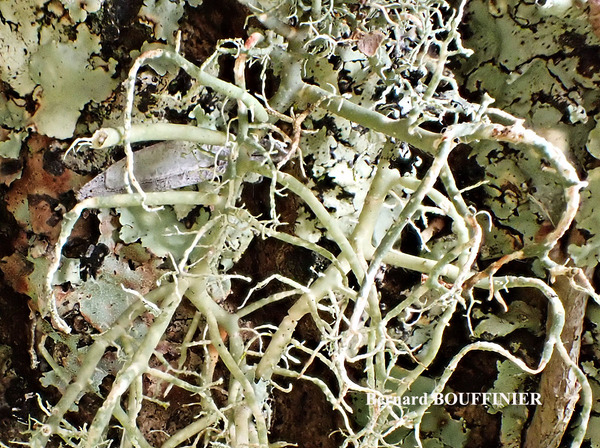
Bernard Bouffinier - Source: http://www.lichensmaritimes.org/index.php?task=fiche&lichen=1301&lang=en
France, Crozon
corticolous
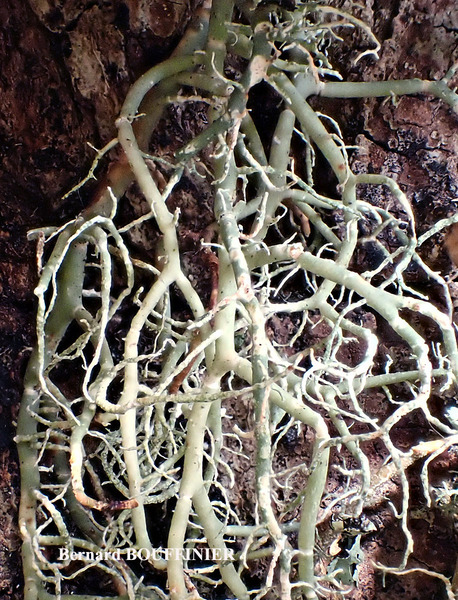
Bernard Bouffinier - Source: http://www.lichensmaritimes.org/index.php?task=fiche&lichen=1301&lang=en
France, Crozon
corticolous
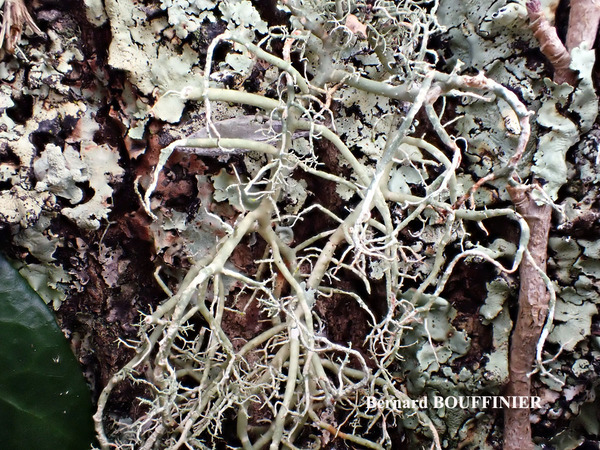
Bernard Bouffinier - Source: http://www.lichensmaritimes.org/index.php?task=fiche&lichen=1301&lang=en
France, Crozon
corticolous
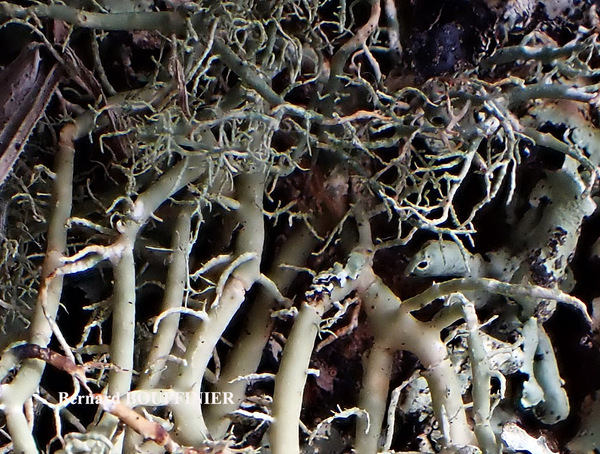
Bernard Bouffinier - Source: http://www.lichensmaritimes.org/index.php?task=fiche&lichen=1301&lang=en
France, Crozon
corticolous
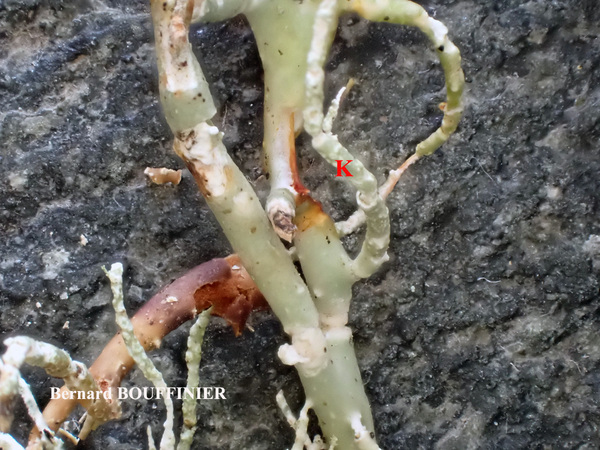
Bernard Bouffinier - Source: http://www.lichensmaritimes.org/index.php?task=fiche&lichen=1301&lang=en
France, Crozon
corticolous
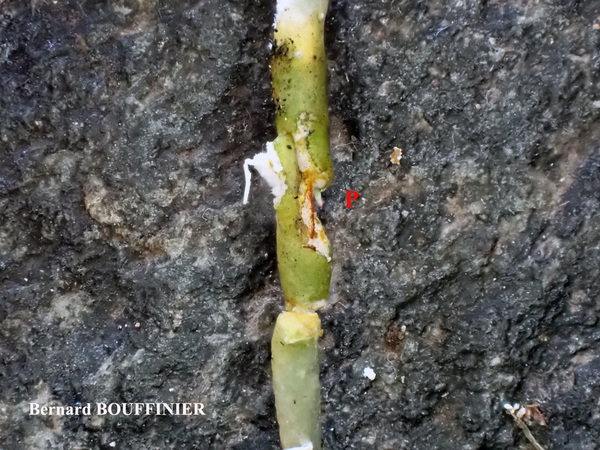
Bernard Bouffinier - Source: http://www.lichensmaritimes.org/index.php?task=fiche&lichen=1301&lang=en
France, Crozon
corticolous
Growth form: Fruticose filamentous
Substrata: bark and rocks
Photobiont: green algae other than Trentepohlia
Reproductive strategy: mainly asexual, by soredia, or soredia-like structures (e.g. blastidia)
Restricted to humid-warm, oceanic areas
Commonnes-rarity: (info)
Alpine belt: absent
Subalpine belt: absent
Oromediterranean belt: absent
Montane belt: very rare
Submediterranean belt: absent
Padanian area: absent
Humid submediterranean belt: very rare
Humid mediterranean belt: absent
Dry mediterranean belt: absent

Predictive model

Tiiu Tõrra; Owner: Tiiu Tõrra - Institute of Ecology and Earth Sciences, University of Tartu, Estonia

Tiiu Tõrra; Owner: Tiiu Tõrra - Institute of Ecology and Earth Sciences, University of Tartu, Estonia

Tiiu Tõrra; Owner: Tiiu Tõrra - Institute of Ecology and Earth Sciences, University of Tartu, Estonia

Tiiu Tõrra; Owner: Tiiu Tõrra - Institute of Ecology and Earth Sciences, University of Tartu, Estonia

Tiiu Tõrra; Owner: Tiiu Tõrra - Institute of Ecology and Earth Sciences, University of Tartu, Estonia

Tiiu Tõrra; Owner: Tiiu Tõrra - Institute of Ecology and Earth Sciences, University of Tartu, Estonia

Tiiu Tõrra; Owner: Tiiu Tõrra - Institute of Ecology and Earth Sciences, University of Tartu, Estonia

Courtesy Danièle et Olivier Gonnet - Source: https://www.afl-lichenologie.fr/Photos_AFL/Photos_AFL_U/Usnea_flammea.htm
France, mars 2015 - Fours Nièvre

Courtesy Danièle et Olivier Gonnet - Source: https://www.afl-lichenologie.fr/Photos_AFL/Photos_AFL_U/Usnea_flammea.htm
France, mars 2015 - Fours Nièvre

Courtesy Danièle et Olivier Gonnet - Source: https://www.afl-lichenologie.fr/Photos_AFL/Photos_AFL_U/Usnea_flammea.htm
France, mars 2015 - Fours Nièvre

Courtesy Danièle et Olivier Gonnet - Source: https://www.afl-lichenologie.fr/Photos_AFL/Photos_AFL_U/Usnea_flammea.htm
France, mars 2015 - Fours Nièvre

Bernard Bouffinier - Source: http://www.lichensmaritimes.org/index.php?task=fiche&lichen=249&lang=en
France, Cap de la Chèvre
saxicolous

Bernard Bouffinier - Source: http://www.lichensmaritimes.org/index.php?task=fiche&lichen=249&lang=en
France, Cap de la Chèvre
saxicolous

Bernard Bouffinier - Source: http://www.lichensmaritimes.org/index.php?task=fiche&lichen=249&lang=en
France, Cap de la Chèvre
saxicolous

Bernard Bouffinier - Source: http://www.lichensmaritimes.org/index.php?task=fiche&lichen=249&lang=en
France, Pointe de Dinan
saxicolous

Bernard Bouffinier - Source: http://www.lichensmaritimes.org/index.php?task=fiche&lichen=249&lang=en
France, Camaret
saxicolous

Bernard Bouffinier - Source: http://www.lichensmaritimes.org/index.php?task=fiche&lichen=249&lang=en
France, Pointe de Dinan
saxicolous

Bernard Bouffinier - Source: http://www.lichensmaritimes.org/index.php?task=fiche&lichen=249&lang=en
France, Roc'h Trédudon
saxicolous

Michel David - Source: http://www.lichensmaritimes.org/index.php?task=fiche&lichen=249&lang=en
France, Camaret
saxicolous

Michel David - Source: http://www.lichensmaritimes.org/index.php?task=fiche&lichen=249&lang=en
France, Camaret
saxicolous

Michel David - Source: http://www.lichensmaritimes.org/index.php?task=fiche&lichen=249&lang=en
France, Le Toulinguet
saxicolous

Michel David - Source: http://www.lichensmaritimes.org/index.php?task=fiche&lichen=249&lang=en
France, Le Toulinguet
saxicolous

Bernard Bouffinier - Source: http://www.lichensmaritimes.org/index.php?task=fiche&lichen=1301&lang=en
France, Bois du Kador
corticolous

Bernard Bouffinier - Source: http://www.lichensmaritimes.org/index.php?task=fiche&lichen=1301&lang=en
France, Bois du Kador
corticolous

Bernard Bouffinier - Source: http://www.lichensmaritimes.org/index.php?task=fiche&lichen=1301&lang=en
France, Bois du Kador
corticolous

Bernard Bouffinier - Source: http://www.lichensmaritimes.org/index.php?task=fiche&lichen=1301&lang=en
France, Bois du Kador
corticolous

Bernard Bouffinier - Source: http://www.lichensmaritimes.org/index.php?task=fiche&lichen=1301&lang=en
France, Cap de la Chèvre
corticolous

Bernard Bouffinier - Source: http://www.lichensmaritimes.org/index.php?task=fiche&lichen=1301&lang=en
France, Crozon
corticolous

Bernard Bouffinier - Source: http://www.lichensmaritimes.org/index.php?task=fiche&lichen=1301&lang=en
France, Crozon
corticolous

Bernard Bouffinier - Source: http://www.lichensmaritimes.org/index.php?task=fiche&lichen=1301&lang=en
France, Crozon
corticolous

Bernard Bouffinier - Source: http://www.lichensmaritimes.org/index.php?task=fiche&lichen=1301&lang=en
France, Crozon
corticolous

Bernard Bouffinier - Source: http://www.lichensmaritimes.org/index.php?task=fiche&lichen=1301&lang=en
France, Crozon
corticolous

 INDEX FUNGORUM
INDEX FUNGORUM
 GBIF
GBIF
 DOLICHENS
DOLICHENS
